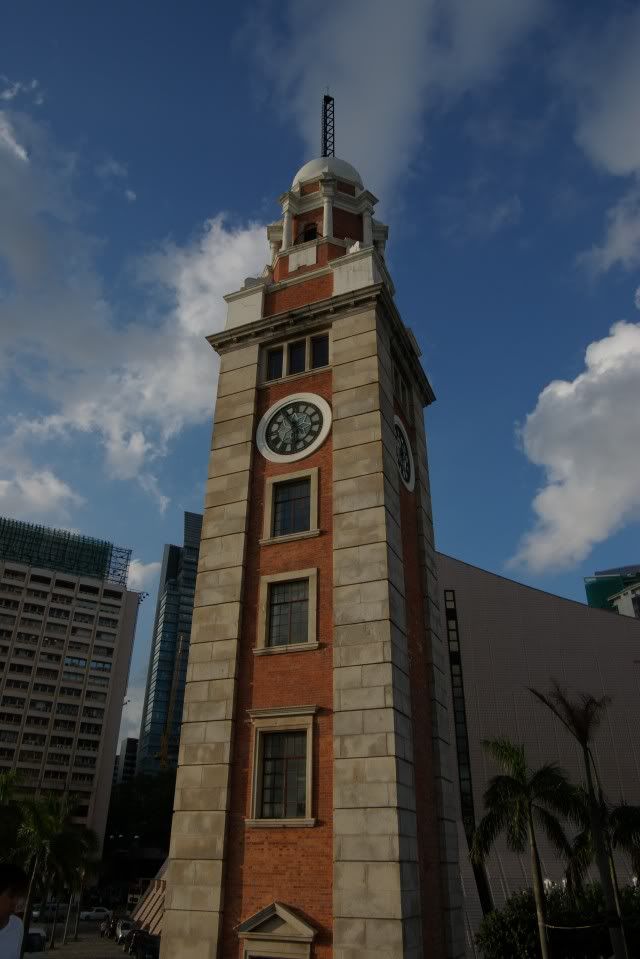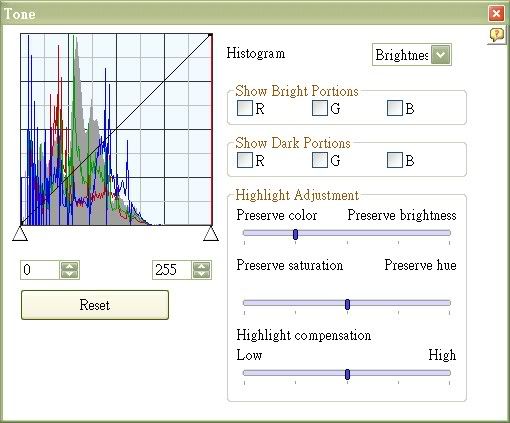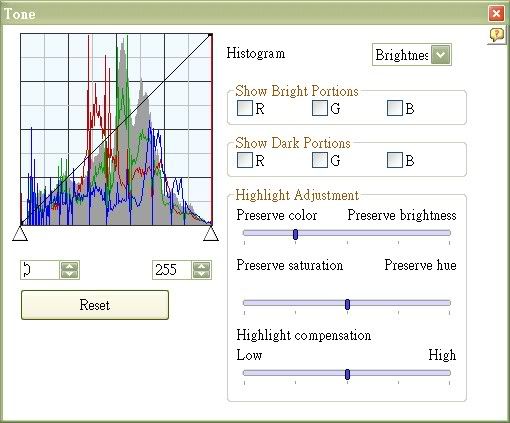http://www.pbase.com/tcom/k10d
Well, when I inspected those comparison shots between the DA* 16-50 against the DA 16-45 as well as those of the DA* versus the DA 21 Limited, I found an obvious irregularity, that is, underexposure. ( Um, it should be "regularity" for Pentax DSLRs, though :-( )
First look at the church photos taken with the DA* 16-50 and the DA 16-45 lenses, I read the EXIF information and discovered that a huge amount of +ve exposure compensation were applied for the two wide angle shots made with the DA* 16-50 and the DA 16-45 at 16mm, i.e., in a value of +1.7EV both for the same scene with the same framing/composition. What does this mean? It simply means that serious underexposure had occurred for the uncompensated metering reading when the shooter attempted to take the shots. Do note also that he put his K10D camera in the Matrix metering mode when he took the pictures.
People may start to argue that the scene is a bit tricky to the light meter for for the lighter wall of church and the bright sky above it. However, I really don't think it is a very difficult scene to be handled with for typical matrix meter with should be somehow intelligent and in this case the K10D matrix / multi-pattern meter simply failed to handle such a situation. And then some people may argue again that the Pentax meter was just trying to preserve the highlight. But I just wish to point out that no blown/burnt out of the sky even after the +1.7EV compensation in the sample pics posted. So, I just wish to ask *what* is/are the camera was trying to "preserve"? What??
So, let's go on to inspect another pairs of photos. This time we can see the church shots taken with the DA 21 lens along with the DA* 16-50 also. The 21mm shot was made with a +0.3EV compensation whereas the DA* 16-50's one was taken with a +0.7EV, which simpy means that the DA* underexposed more than the DA 21, for the same scene with pictures taken at nearly the same time. We can also draw another rough conclusion that the wider the angle in used, the K10D tends to underexpose more when we compare the shots taken at 16mm with the same DA* lens and the DA 16-45, even the two pairs of shots should be taken at a different time which the weather conditions might be different. Well, the K10D user still used the matrix/pattern metering mode and underexposure did still occur, again.
In fact, the underexposure problem of the Pentax DSLRs are the same old problem which seem has never been and could not be cured by Pentax since their old first *ist D. Just look at the set of quick tests and experiments carried out by another K10D user below:-
http://blog.xuite.net/allison_tabris/tabrisphoto/10528261
(Text in Traditional Chinese, you can use Babelfish to translate.)
From the above page, we can see that even fixed pattern metering, i.e., the Spot meter, of the K10D underexposes much and indeed it is rather inaccurate. For a dark mouse, a +ve EV exposure compensation could still be required - this simply violates the basic rule and working principle of light metering for a reflective light meter and is actually rather abnormal amongst all other light meters on Earth which are calibrated to meter correctly for the mid-grey/tone. In fact, with such rather inaccurate Spot meter of the Pentax DSLRs, even of their current "top" model the K10D, the real purpose of a Spot meter is totally defeated as every user uses this mode is supposed to be aiming for the highest possible accuracy and total control in metering. Of course, if a Pentax DSLR user is to adapt for such abnormality, he should always aim at the dark (areas) when using the Spot meter(ing) as an attempt to get proper exposure, but then this is actually very improper, frankly.
And then I can guess some people will still argue that I do not know about the actual condition of the above test shots as I am not the one who was at the site and took the picture. Well, no problem with this, I will show my photo then. Below is a picture took with my K100D on a scene which I don't think is something really very difficult, although the subject was lit by the sunlight:-
I shot RAW and the picture below is the direct original picture without any digital exposure compensation:-

The corresponding *original* exposure histogram actually looks like this:-

Well, in order to rescue the picture to make it looks better again and as close as it could look like as the real scene, a large amount of +ve exposure compensation is inevitable. Actually, to bring it back to the normal sunshine look, a significant large amount of +1.5EV is required, in the Pentax Photo Laboratory. After the correction, the histogram looks more healthy now then, as below:-

But the fact is the whole "corrected" picture now just looks flatter and the building looks less pop than it should be, than *if* proper exposure was achieved *at* the time of exposure by applying the same +1.5EV exposure compensation (but then this *must* require trials and errors *at* the *field* which just means more time wasted but with less photo opportunities - when the time is being wasted, photo opportunities would go away too). Besides, the shiny feel and the colours of the picture becomes a little bit worse too, after the "correction". Now, we have:-

So, proper exposure is *always* the best thing we want and bad exposure and underexposure is just an evil which is *always* undesirable. Well, again any more "preserve highlight" *theory* (by those Pentax defenders)? Well, what can we look from the original histogram distribution above? In fact there is nothing close to clipping, even that we inspect the individual histogram curve for the individual R, G or B colour channel. The whole histogram simply skewed heavily to the left and left *much* room in the right. In my book (and actually in any book about light metering), this is simply called UNDEREXPOSURE.
So, afterall, what's the true advantage of such underexposure if it is really intended. I'm afraid that the true answer is None but the reverse is true. Digital compensation cannot do all the magics but only that inferior picture quality will be resulted - Here is a more detailed and systematic analysis.
To compare with other better DSLRs in the metering and exposure department, take the Canon 5D as an example, which will seldom let me down in shooting under the sunlight, even with bright or even very white subjects and scenes, which the 5D is clever enough or at least much cleverer than the Pentaxes to handle these quite well and yields very satisfactory results with a much higher hit rate and more acceptable results, even when dealing with more tricky scenes and objects. Here are two quick examples, which were made directly out of the camera as in-camera jpegs, just and merely by aimed and shot (no re-touching of any kind has been made except for down-sizing):-


Truly speaking, such kinds of very annoying underexposure problem, with variation with lenses and focal length, etc., is really one of the big reasons to *force* me not to get any Pentax DSLR body "upgrade" further but I need to go with the Canon for a new body not only just for more pixel count.
Unless Pentax is willing and/or able to make a brand new designed body with improved metering and exposure, I think this would be very hard to be acceptable, at least by my own (minimum, I think) standards and requirements. Or, if they are not just so stubborn to not go back to their old but actually reliable 6-segment metering which used in their MZ line of SLRs and quite some popular high end film P&S as well as a few very early Optio DCs, the problem will never disappear, I bet. For a few more examples on how inferior underexposure could spoil photos and how other "proper" DCs/DSLRs can do better (including my old trust-worthy Optio 330 which just has the old 6-segment pattern metering), see my this old *ist D comparison gallery:-
http://ricehigh.net/Samples/samples.html